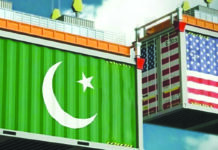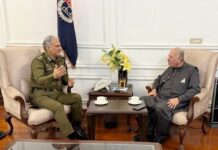Border disputes are never only about geography. They are about the weight of history, the politics of memory, and the insecurities of nations. The renewed violence between Thailand and Cambodia, erupting on July 24, near the centuries-old Khmer-Hindu temple of Prasat Ta Muen Thom, is yet another reminder that unresolved pasts have a way of breaking into the present.
What began as a landmine incident injuring Thai soldiers spiraled into a full-blown crisis. Thailand installed barbed wire along a disputed section of the frontier. Cambodia accused Bangkok of provocation. Diplomatic gestures turned hostile: ambassadors recalled, border crossings sealed, armies mobilized. The predictable outcome followed by barrages, rocket fire, airstrikes, and civilians caught in between. Eleven Thai civilians and a soldier are confirmed dead. Cambodian rockets struck villages, forcing the evacuation of tens of thousands. Thailand retaliated with F-16 airstrikes. Phnom Penh denies its own losses, claiming self-defence, while Bangkok insists the aggression began on the other side. The script is old; only the victims are new.
This is not an isolated flare-up. In May, similar clashes claimed lives, but backchannel diplomacy quieted the guns. This time, the violence has escalated further, signaling a dangerous shift. The deployment of airpower suggests a willingness to expand beyond local skirmishes. And the political relationship between the two neighbours is in free fall, now at its lowest point in years.
The roots of this dispute lie in colonial-era cartography. The borders that divide Thailand and Cambodia were drawn not by them but by the French and British, leaving behind ambiguities that became time bombs. For Cambodians, temple complexes like Ta Muen Thom are sacred proof of Angkorian civilization— a reminder of a cultural golden age. For Thais, they are part of a heritage they once influenced. Both nations interpret history through lenses of pride and grievance. Compromise becomes betrayal. Concessions feed nationalist outrage.
History offers chilling echoes. In 2011, a similar fight erupted near the Preah Vihear temple, killing 28 and displacing tens of thousands. At that time, the Association of Southeast Asian Nations (ASEAN) managed enough dialogue to calm tensions. Today, the same ASEAN looks weaker. It is overstretched by Myanmar’s civil war, rifts over the South China Sea, and the deepening US-China rivalry. The region’s capacity for crisis management has withered just as the risks have grown.
Southeast Asia cannot afford another festering conflict while it faces bigger challenges— from climate crises to great-power competition. What it needs now is quiet, determined diplomacy, not loud threats. The region’s future as a zone of peace and growth depends less on distant superpowers than on the ability of its own neighbours to settle old arguments with wisdom rather than weapons.
This matters far beyond a few kilometres of jungle. Southeast Asia has built its modern identity on economic dynamism and relative peace. A border conflict between two ASEAN members threatens to fracture that image. It exposes the limits of the so-called “ASEAN Way”— consensus, non-interference, endless dialogue without resolution. It risks setting off an arms race, as both countries invest in military modernization to deter future incidents. It disrupts the lives of border communities whose livelihoods depend on trade and tourism.
And like all unresolved conflicts, it tempts outside powers. Cambodia has deep ties with China. Thailand retains security links with the USA. Prolonged militarization makes it easier for these rival powers to turn a bilateral dispute into another pawn on the Indo-Pacific chessboard. The Emerald Triangle where Thailand, Cambodia, and Laos meet has always been geopolitically fragile. If Laos feels threatened or external actors meddle, the conflict could spiral beyond the control of either Bangkok or Phnom Penh.
The humanitarian costs are already mounting. Forty thousand villagers have been forced to leave their homes. Shelling has struck hospitals. Refugees may soon spill across borders, joining the region’s existing crises from Myanmar. Every passing day of violence risks leaving deep scars that will last far longer than any ceasefire.
Where is ASEAN in all this? It has frameworks on paper: the Treaty of Amity and Cooperation, the ASEAN Regional Forum, the Institute for Peace and Reconciliation. Indonesia could, in theory, reprise its role as a mediator. But ASEAN’s greatest virtue (its consensus-based, non-interfering diplomacy) is also its greatest weakness. It can encourage dialogue, but it cannot compel. If either Thailand or Cambodia chooses to dig in, ASEAN is reduced to issuing polite calls for restraint, even as the guns keep firing.
Ultimately, the real question is one of political will. Neither country benefits from a prolonged conflict. Both rely on tourism and trade. Both are proud members of ASEAN’s economic integration. Yet both governments are hemmed in by domestic nationalist pressures. In Bangkok and Phnom Penh, appearing conciliatory carries a steep political cost. And so the logic of escalation continues: each side believing it cannot afford to blink first, even if both risk far more by not blinking at all.
The long-term consequences of inaction are severe. Prolonged militarization will deepen distrust and make future border demarcation even more difficult. Humanitarian fallout will burden local communities already under strain. Trade disruptions will undermine ASEAN’s dream of a seamlessly connected region. And in the worst-case scenario, this local dispute could become entangled in the broader strategic rivalry between major powers, making Southeast Asia once again a playground for someone else’s ambitions.
But none of this is inevitable. History shows that even bitter disputes can be managed when pragmatism prevails. In 2011, after deadly clashes, the two sides ultimately returned to dialogue. In quieter times, Thailand and Cambodia have managed to cooperate on trade, security, and even joint tourism projects. There is still room for diplomacy, if both governments are willing to rise above short-term political gain and think of the longer-term costs.
Borders drawn by colonial powers will always carry the risk of resentment. Yet in the 21st century, clinging to grievances from the past serves no one. The temples along the Thai-Cambodian frontier are ancient, but the needs of the people living there are not. They want safety, stability, and prosperity— not another generation condemned to live under the shadow of guns.
The time for nationalist posturing is over. Southeast Asia cannot afford another festering conflict while it faces bigger challenges— from climate crises to great-power competition. What it needs now is quiet, determined diplomacy, not loud threats. The region’s future as a zone of peace and growth depends less on distant superpowers than on the ability of its own neighbours to settle old arguments with wisdom rather than weapons.






















